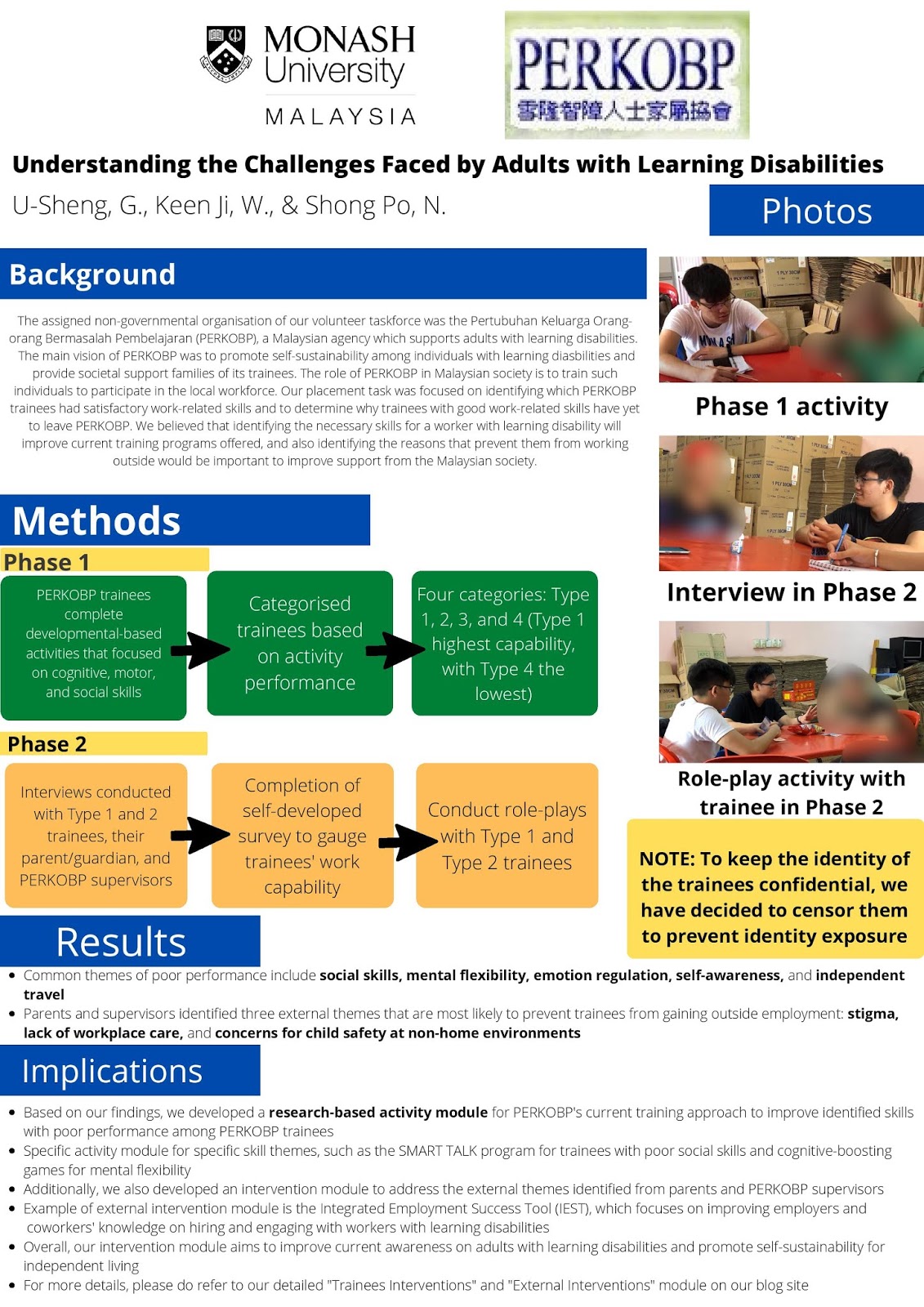Welcome

Welcome! Thank you for viewing our blog! We are Daniel, Keen Ji and Aaron, and we'd like to share with you our experience throughout our time during the Monash Campus Community Engagement Program. We invite you as our honourable audience to enjoy our presentation and sincerely wish that it will enrich our readers with experiential knowledge beyond the typical classroom. In this entire blog, you'd see our various blog posts as follows: 1) Acknowledgements 2) Phase 1 3) Phase 2 4) Themes 5) Intervention module overview 6) Trainees intervention 7) External Intervention 8) References Happy reading! :) From left to right: Aaron, Daniel, Keen Ji

